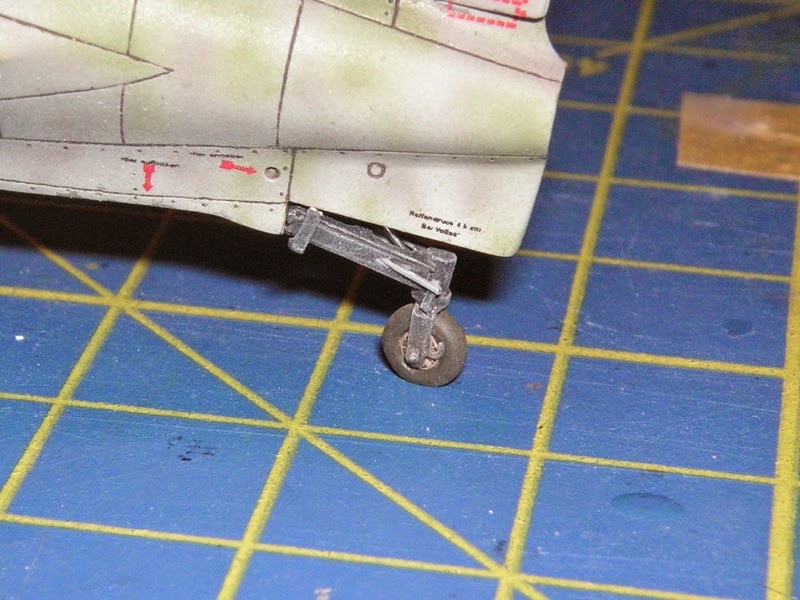
The Academy Komet is quite accurate but in need of correction in some respects. I have quite a few reference books about the Komet, including the two-tome work by Ransom and Cammann (Classic volumes 8 & 9), arguably the definitive Komet reference book. It contains many of the famous three-view drawings by acclaimed aircraft drawing artist Arthur Bentley.
By comparing the kit's panel lines to the drawings I found a certain amount of discrepancies, which I decided to remedy: some panel lines had to be removed completely (e.g. from the wings, which were wooden on the real thing and had no panels at all) and others were missing and had to be scribed.
Why would I go to such lengths on what is ultimately a 'whatif' model? Well, the idea was to make an exact representation of the Komet trainer as it could have been, had time and circumstances permitted it to go into service. Perhaps I also wanted to prove to myself that I was able to do the necessary corrections and make a model 'true to technical drawings'.
Pictures show the amount of re-scribing done. Some missing details, such as the towing cable attachment point and the small scoop under the nose, were also added at this point.
Talking of references, among the ones in my possession I found Aero Detail 10 most useful from a modeler's point of view as it has plenty of excellent color photos of surviving Komets from around the world, accompanied by helpful captions and some useful diagrams as well.
The already mentioned Classic volumes are a scholarly work that will be found invaluable by anyone interested in the history of the Komet. In addition to the Bentley drawings it also contains color profiles and many contemporary photographs.
A 'fun' read, and my personal favorite Komet book is Rocket Fighter by Mano Ziegler.
No list of Komet references would be complete without mentioning the excellent on-line resource by Rob de Bie.
Me 163 by Rob de Bie
It is by far the most exhaustive and complete source of information about the Komet to be found on the Internet and it is continually being updated with new information. It has everything a modeler can desire, including a wealth of information about any and all Komet-related kits and other modeling products as well as walkarounds and much, much more. I would like to take this opportunity to thank Rob for what he is doing for the modelers and Komet fans communities!

























































